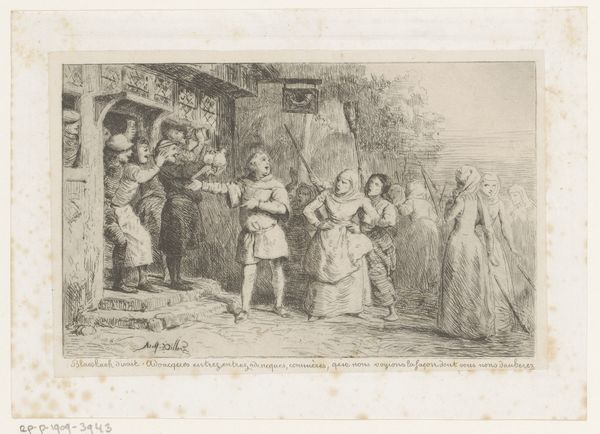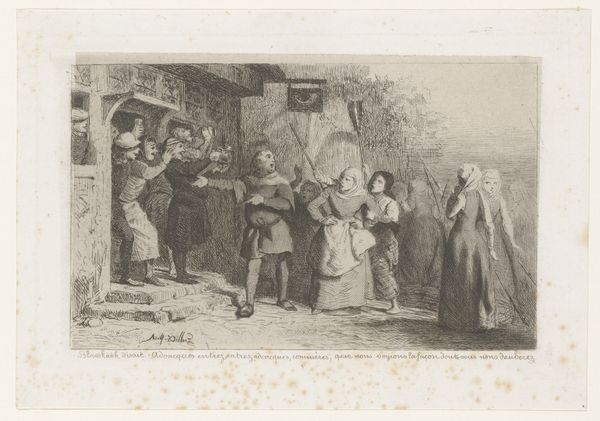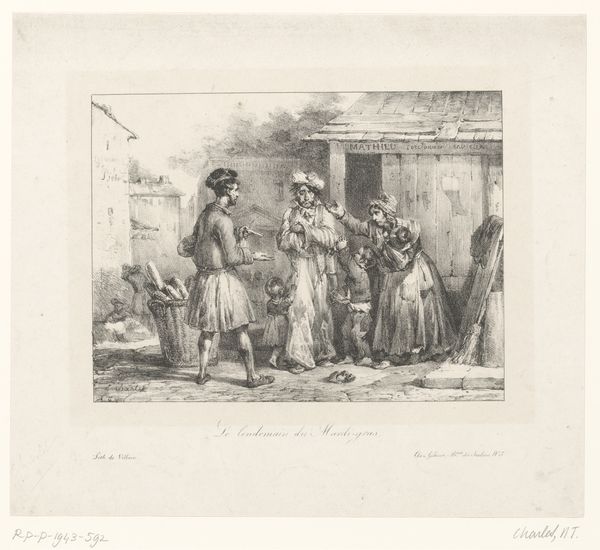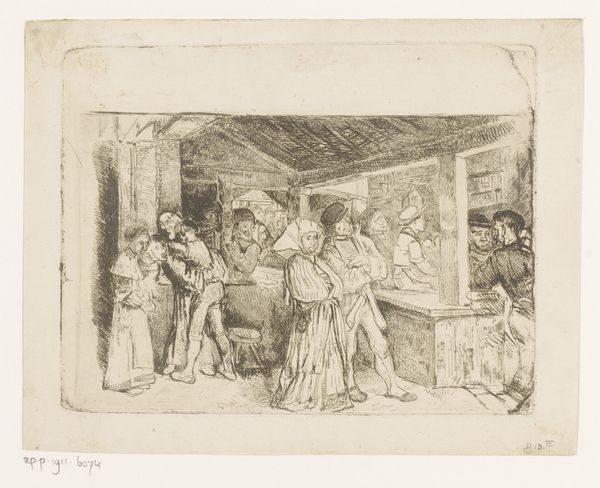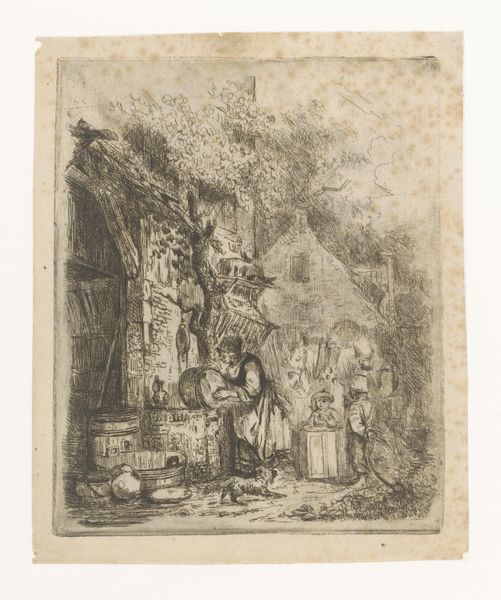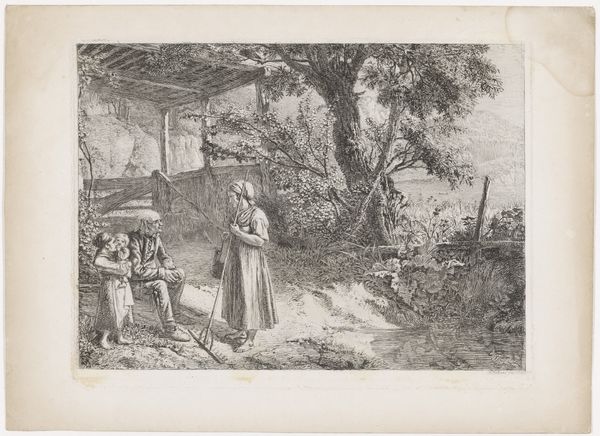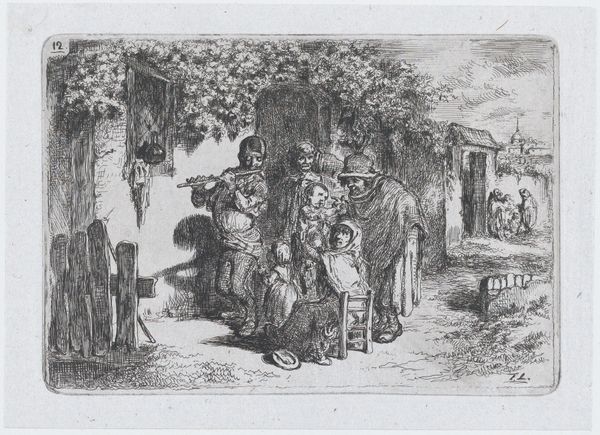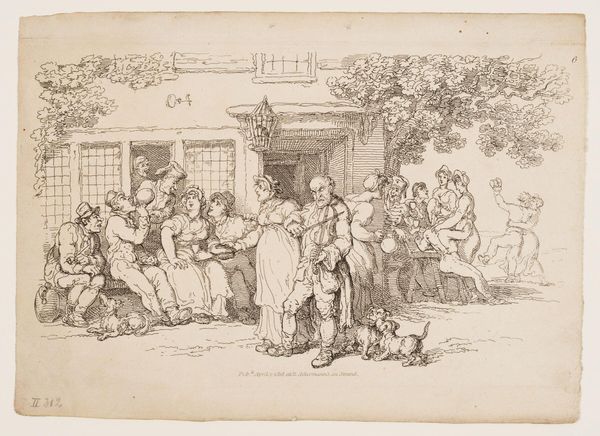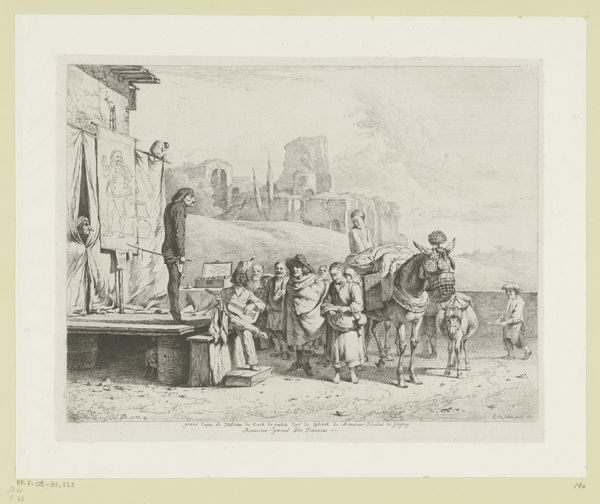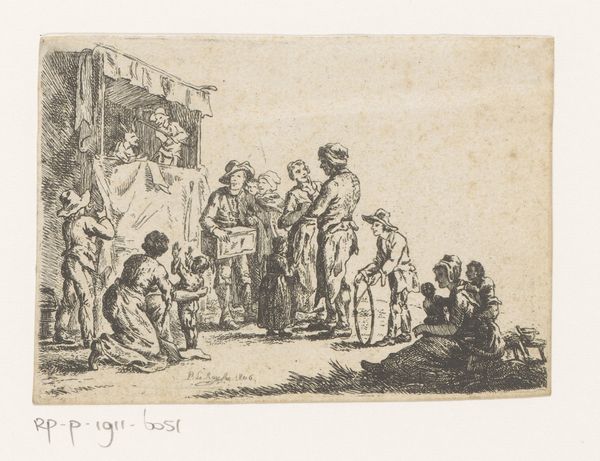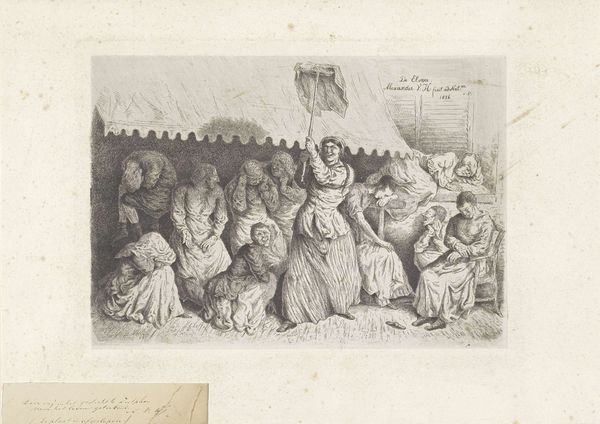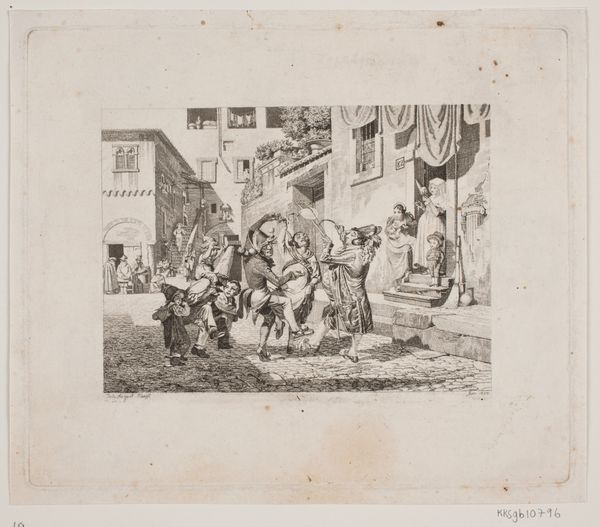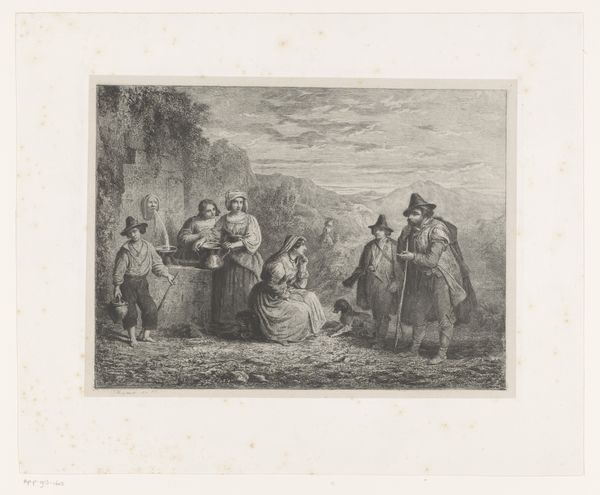
drawing, print, etching
#
portrait
#
drawing
#
narrative-art
# print
#
etching
#
etching
#
figuration
#
genre-painting
#
realism
Dimensions: height 120 mm, width 182 mm
Copyright: Rijks Museum: Open Domain
Curator: Adolphe Alexandre Dillens' "Menigte vrouwen voor een herberg met drinkers," created in 1861, captures a bustling scene outside a tavern. This etching and print offers a fascinating glimpse into everyday life. Editor: Oh, the immediate feeling I get is… tension! There’s such a clear divide—the shadowy figures crammed into the tavern doorway versus the assembled women, almost defiant, outside. Curator: Precisely! Dillens masterfully plays with light and shadow, highlighting that contrast you noticed. Beyond the purely aesthetic, it is important to know the socio-political role the imagery like this serves. We are looking at what the role of gender and class distinctions would be and what public narratives Dillens presents for his audiences to grapple with. Editor: Yes, that gendered tension! The women seem ready to… well, confront. Some have these almost medieval looking implements like spears! It’s not a passive gathering. There’s definitely a sense of something about to erupt, though what remains gloriously unclear. Are they protesting? Are they simply staking their claim? It’s like a moment caught just before the storm. Curator: Dillens was definitely tapping into the rising social consciousness of his time, especially regarding women's roles. Notice how he gives each woman a unique face, a distinct character. These aren't just anonymous figures in a crowd; they're individuals. But their resistance still begs questions, such as, "Were they challenging patriarchal structures?" Editor: Their garb gives that era, yet the anger is so timeless. It reminds me of how art always, subtly or not, enters into a silent conversation with the period, right? Curator: Exactly, the dialogue is constant and often challenges our present perspectives! These realistic drawings do so even more poignantly. In art institutions such as this, we often analyze if these were simply works that presented some glimpse into everyday life or a reflection that actually catalyses the period. Editor: It's intriguing how a simple etching, with its monochromatic palette, can hold so much emotional complexity. You are absolutely right—these women are both of their time and eternally relevant. It reminds me we often need to be asking questions as to whose voice art echoes and amplifies, which you mentioned just a bit earlier. Curator: I find myself wondering, even centuries on, whether Dillens intended to provoke questions, not necessarily provide answers. Art can do both.
Comments
No comments
Be the first to comment and join the conversation on the ultimate creative platform.
